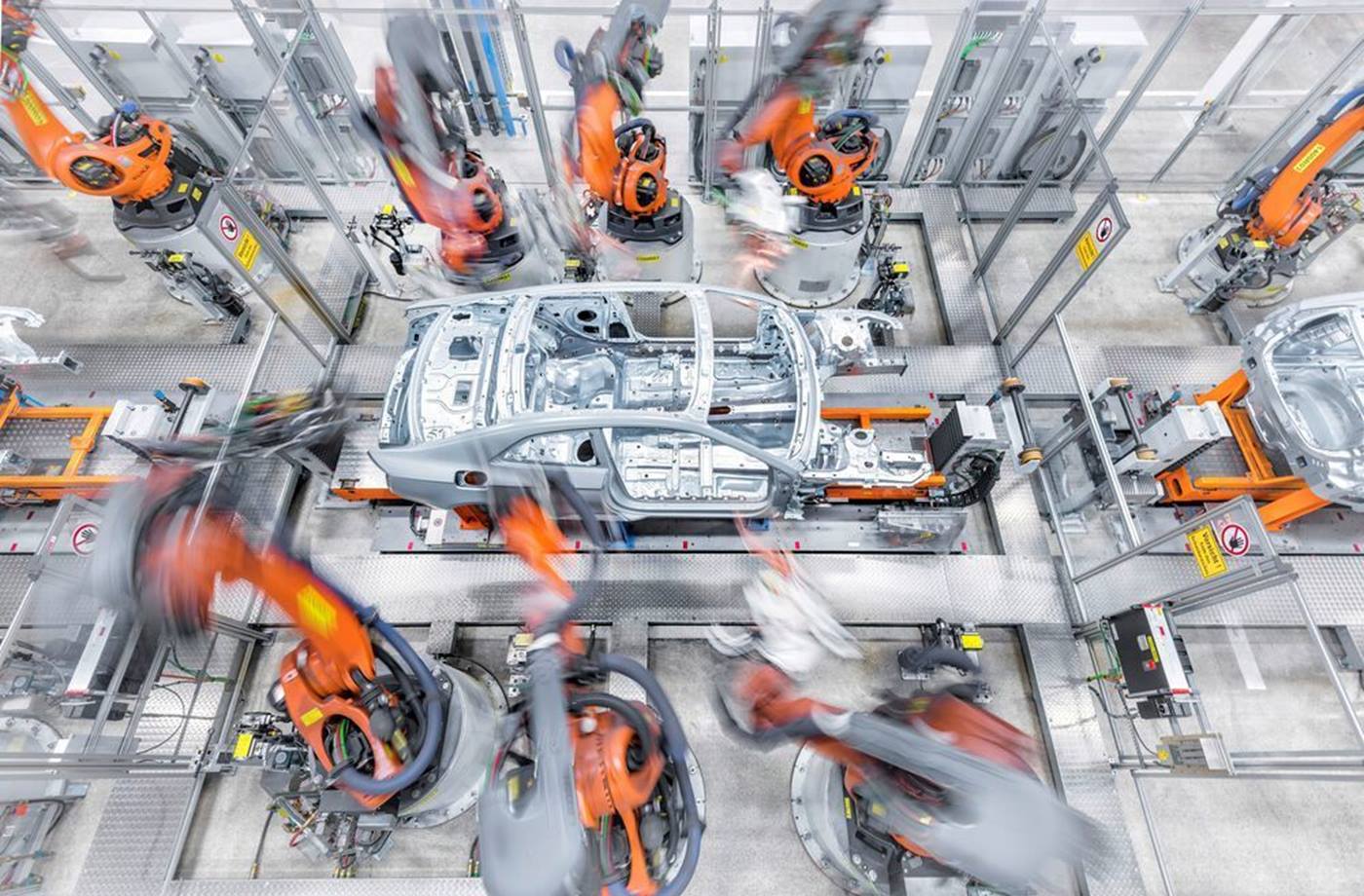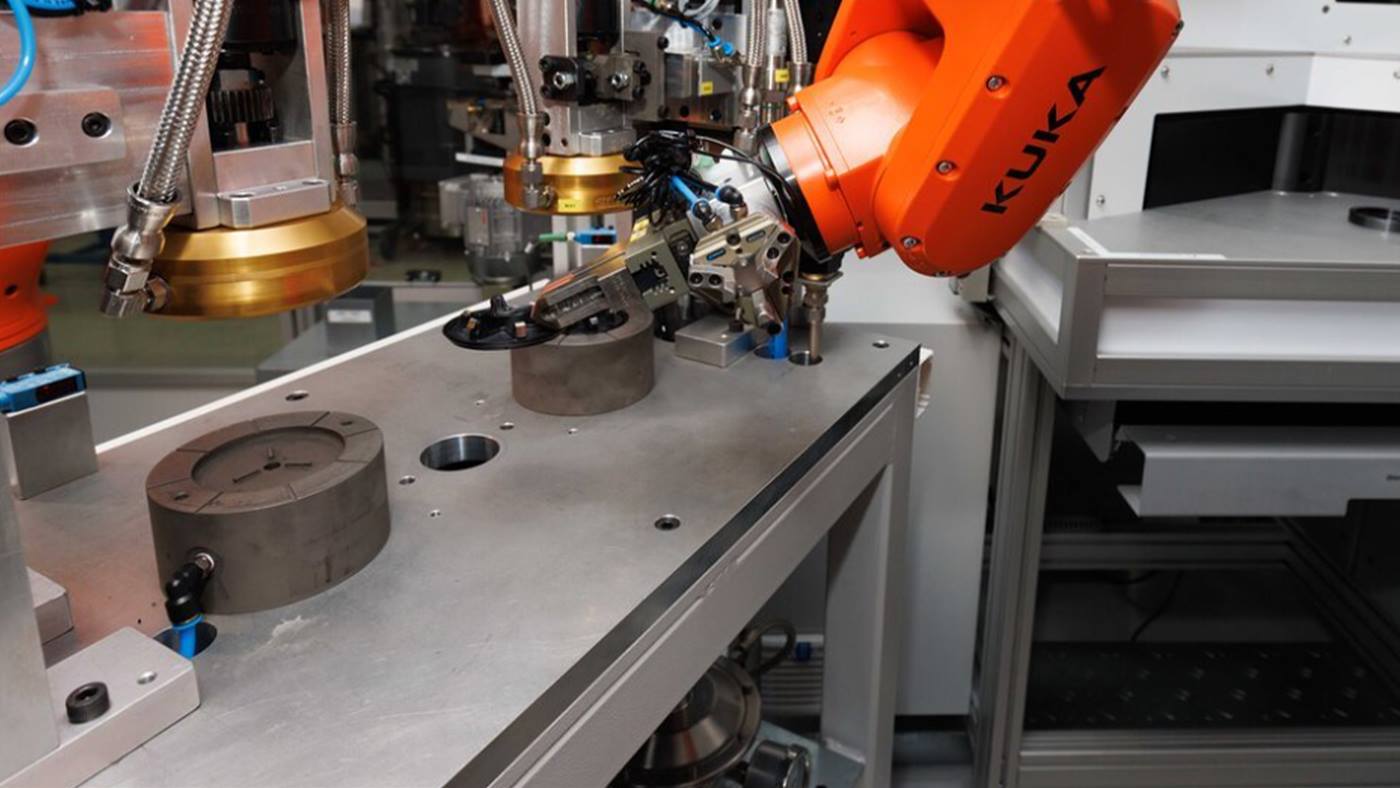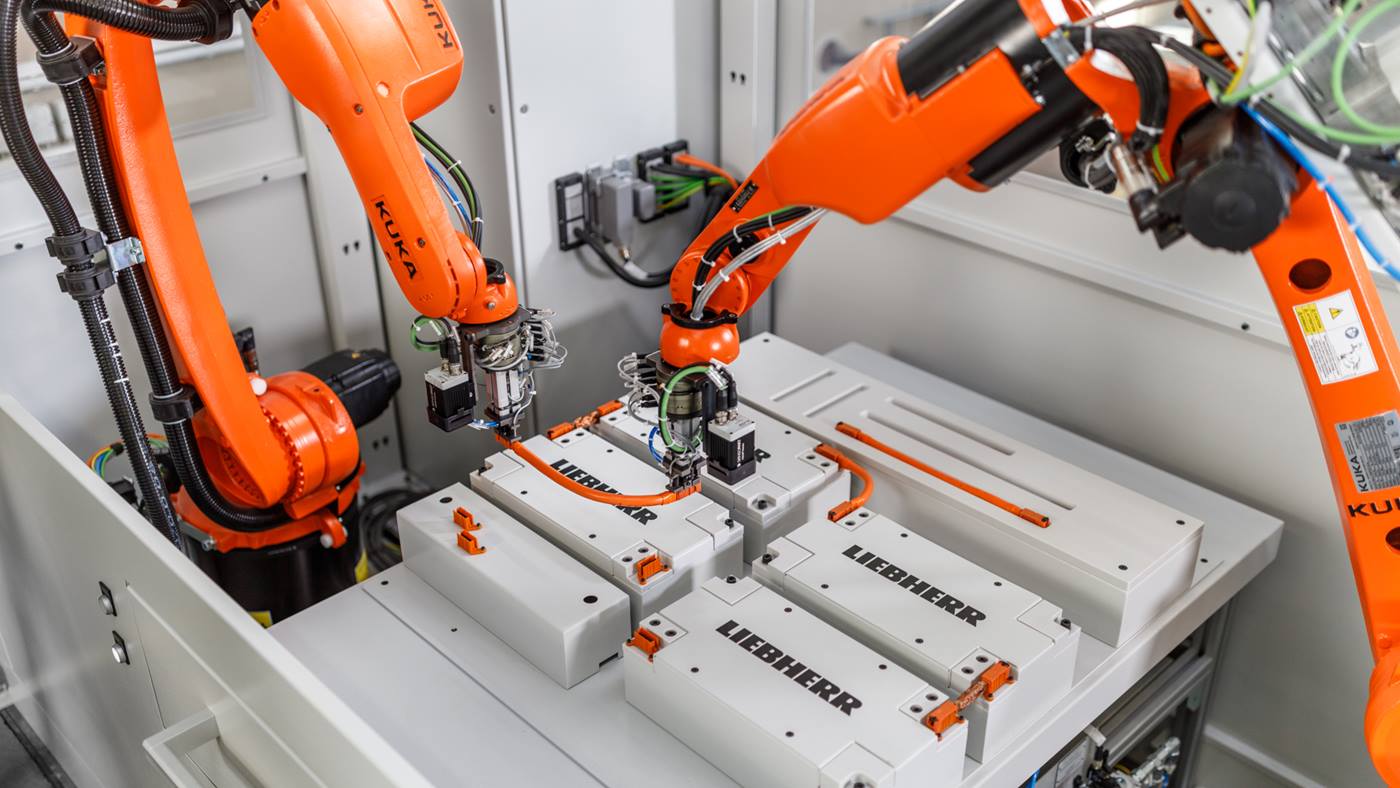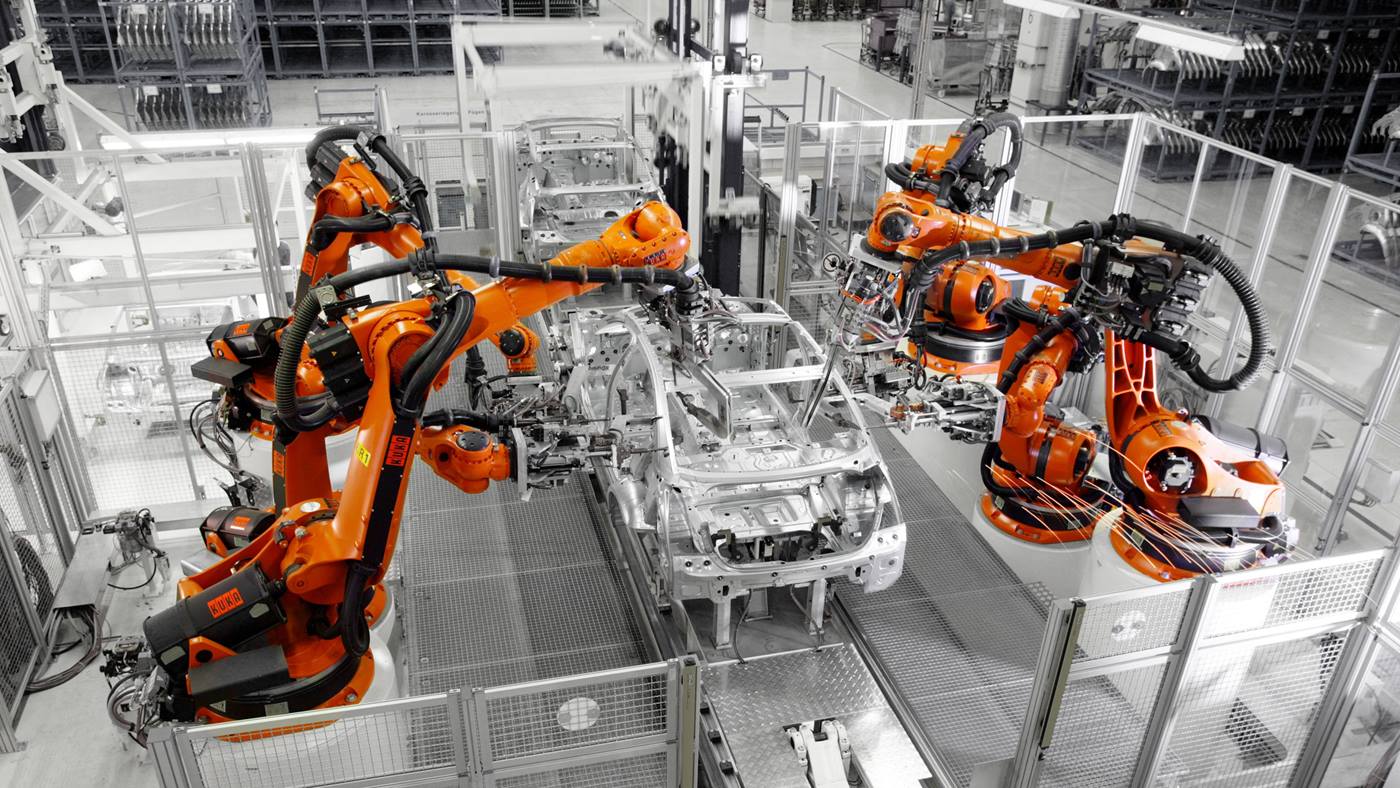
Industrial battery disassembly makes electric cars even more sustainable
The business of electric cars is booming – but what happens to the tons of used batteries? Fraunhofer Institute for Manufacturing Engineering and Automation has successfully tested how industrial battery disassembly works using the KR QUANTEC robot. The goal: make the use of electric cars even more sustainable.
Industrial robot enables the recycling of valuable raw materials

Twelve partners did research together for several years
The research partners investigated how to recondition batteries from electric cars in both sustainable and economically viable ways. In this project, a total of eight robotic applications were set up as demonstration and testing tools that could be used for continuous industrial operation. The focus was on the disassembly of electric car batteries since the prerequisite for recycling these components is a clean separation into their component parts, which is no easy task.
Battery disassembly: complex and life-threatening


Automation solutions can play a decisive role in making e-mobility even more sustainable.
Automated disassembly of batteries solves all three
The three challenges are ideal for a robot-based solution. A KR QUANTEC assembly robot with a payload capacity of 270 kilograms was operated entirely by means of the “pitasc” software developed at Fraunhofer and controlled by means of KUKA.RobotSensorInterface, which facilitated connection to external sensors. Researchers were able to control important disassembly steps in real time and thus automate various operations that previously had to be done manually. KUKA’s technology solved three problems at once: it reduced the shortage of skilled labor, minimized the safety risk for employees and, with efficiency, ensured that battery recycling is also economically profitable.

Strict EU Batteries Regulation forces action
In addition, manufacturers face stricter rules for battery production. Since 2023, an EU Batteries Regulation has required, among other things, that new batteries include an increased proportion of recycled materials – even if these have been imported into Europe. The successful research project in Stuttgart shows how valuable KUKA’s technical support can be.

No matter which battery from which electric car, the KR QUANTEC knows how to handle it


Thanks to its streamlined geometry and small footprint, the QUANTEC can be used to build a flexible and future-oriented system.
Flexible systems successfully tackle batteries with a wide range of designs

KR QUANTEC: attractive for a wide range of applications
Versatility is one of the great advantages of the KR QUANTEC series: “Because of its streamlined geometry and small footprint, the KR QUANTEC can be used to build a flexible and future-oriented system,” says Thomas Schmidberger, Global Business Development Manager for Electronics at KUKA. “Like all KUKA robots, it is also ESD-certified as standard to ensure safe handling of components that are sensitive to electrostatic discharges.”

Beyond this, the new generation of the KR QUANTEC articulated robot impresses with its distinctive energy efficiency due to its standard DC controller. Energy consumption was significantly reduced in both the motion and standby modes. In the production motion, the six-axis robots consume around 30 percent less energy than the predecessor model because of its recovered brake energy, among other things. In standby mode, the robots consume 60 percent less energy.
An industrial robot that can do even more than automated disassembly

Market volume growing rapidly
This also applies to the field of battery disassembly, particularly since the electric vehicle industry will develop rapidly in the coming years. Experts anticipate the global market volume for electric vehicles to rise from just under $420 billion USD (2022) to more than $US 770 billion by 2028. The project’s test series has now shown how this great potential could be harnessed for battery recycling by automotive OEMs (in-house EV recycling), battery producers or recycling companies. Interested companies can have the feasibility of robot-based disassembly for their products tested at Fraunhofer IPA. The institute is also working on optimizing products initially for disassembly.

Cooperation between KUKA and scientific community has proven effective
It is also worth noting that the work that went into this project was not a new experience for everyone involved. In the development and testing of its technologies, KUKA has been in a trusting collaborative relationship with the research institute for decades. The first KUKA cleanroom robotwas jointly developed around 20 years ago, followed by the ESD certifications of dozens of KUKA products along with many others.

An interaction between the industry and the scientific community that has proven itself once again is the DeMoBat. “We have built Europe’s largest test facility for battery disassembly,” says Anwar Al Assadi proudly, “and we have demonstrated how automation solutions can play a definitive role in making e-mobility even more sustainable.”












